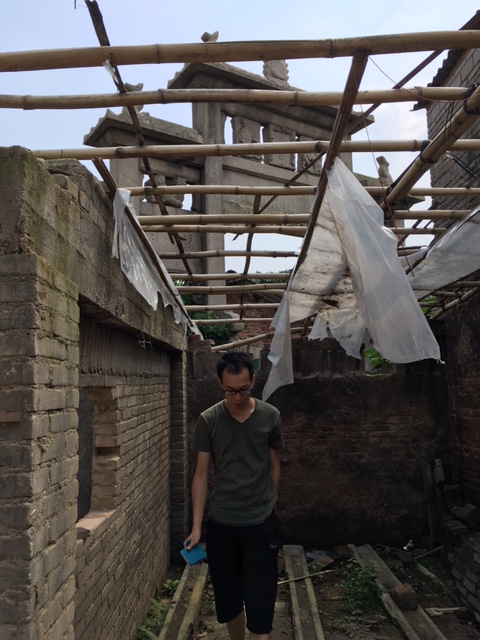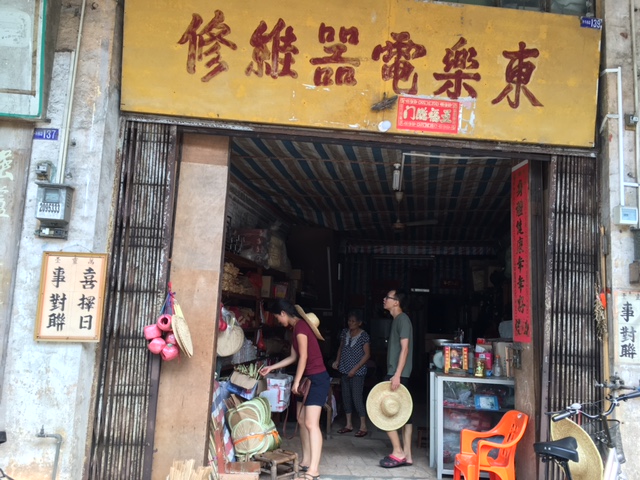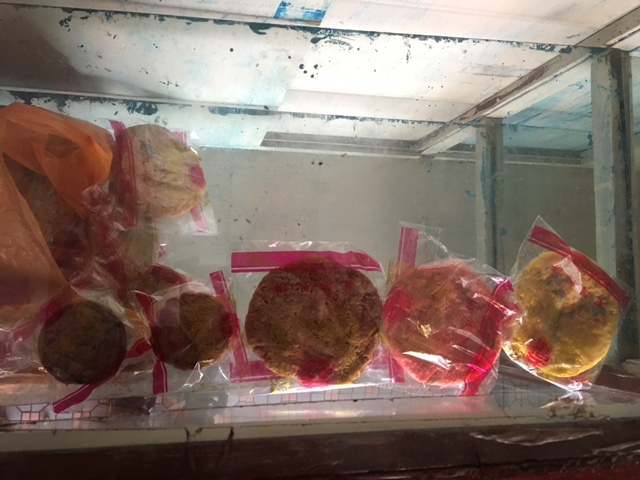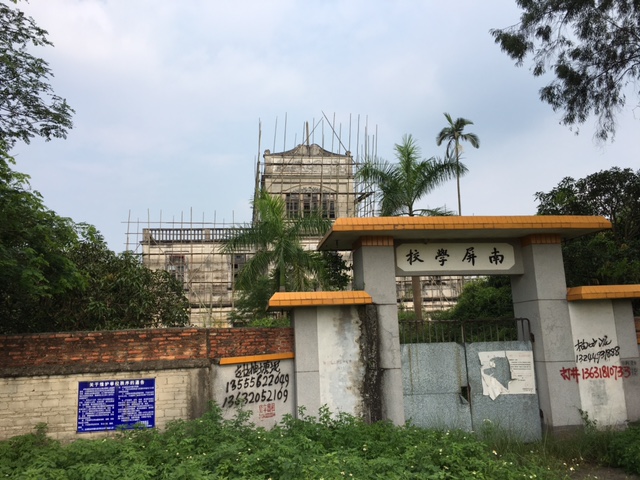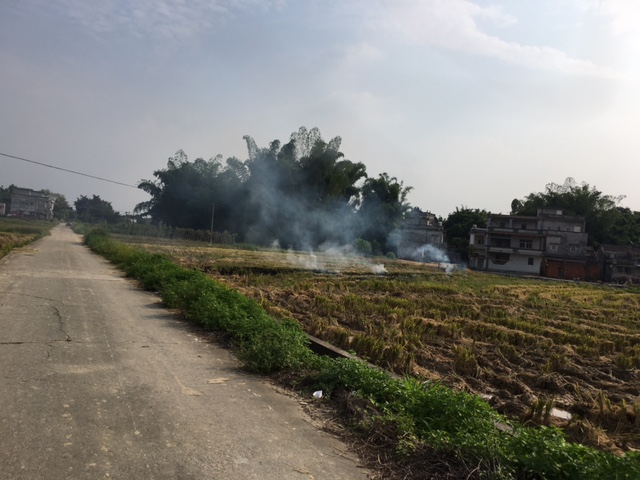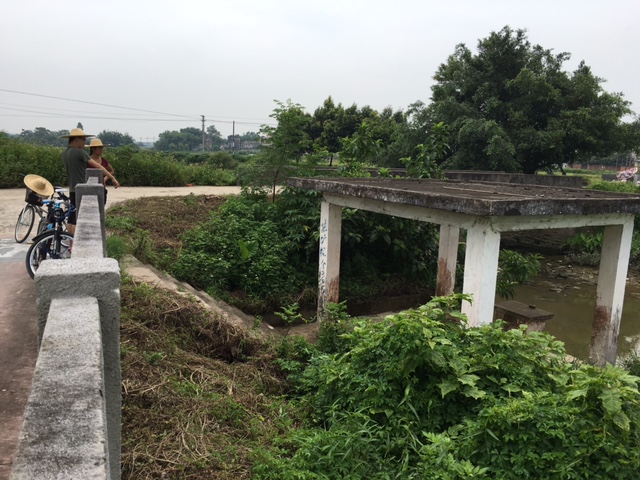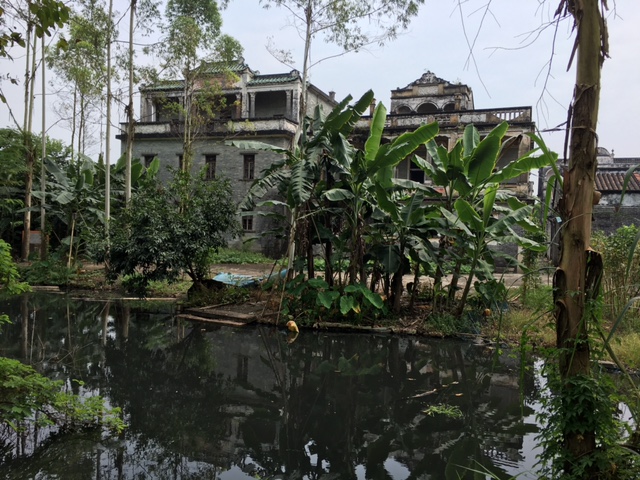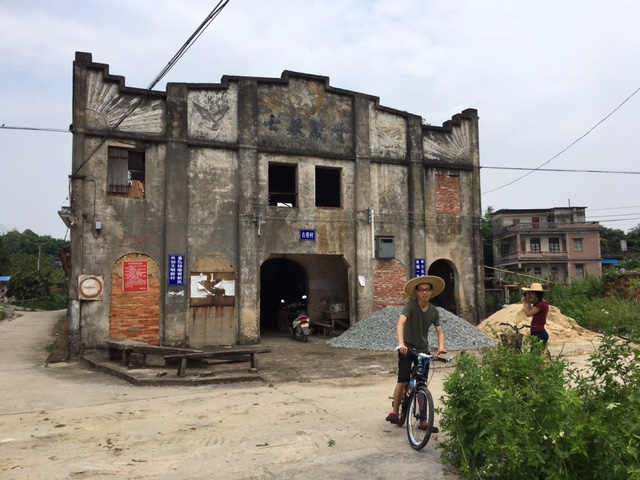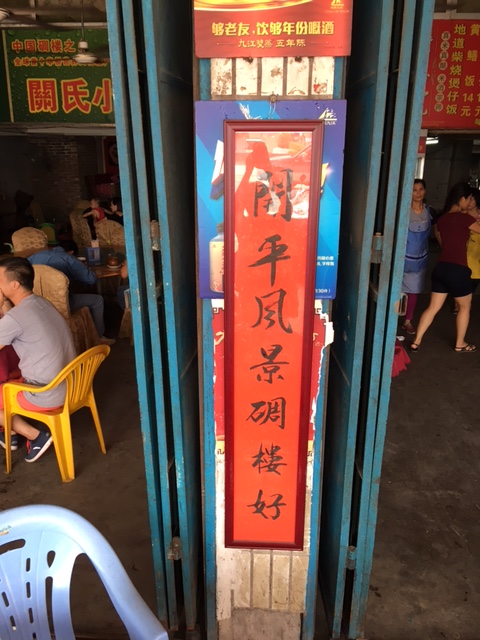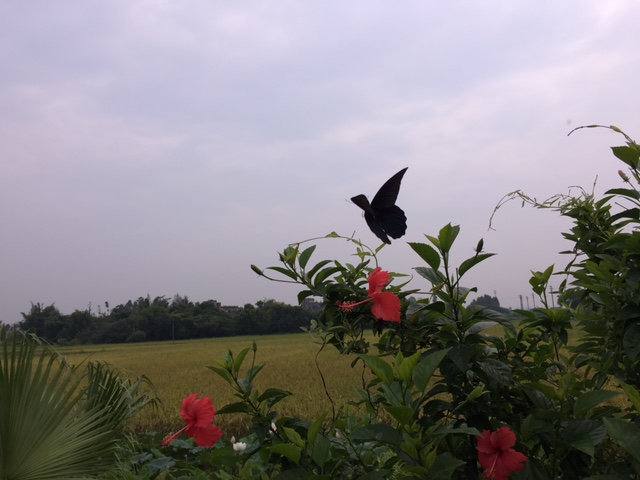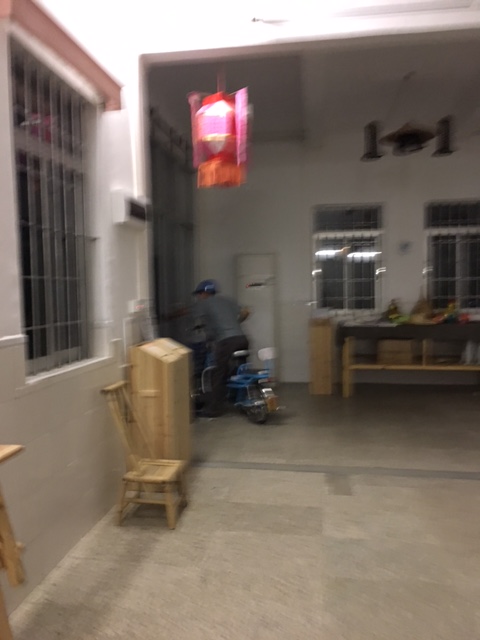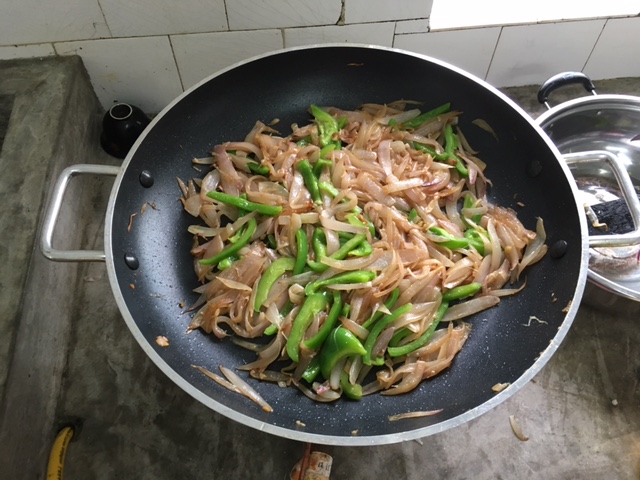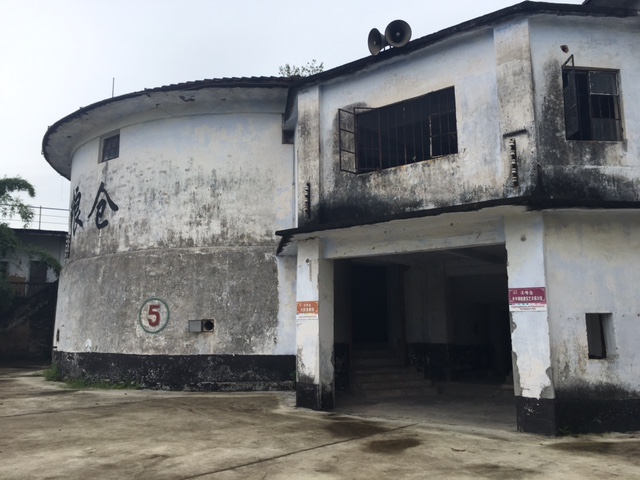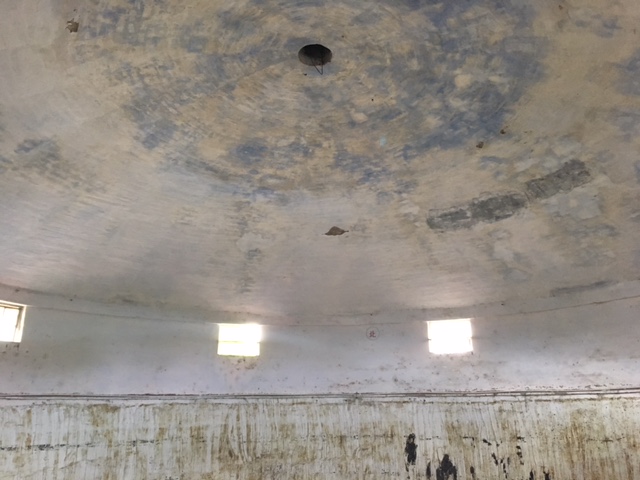CJ has a really bad cough, and yesterday he finally decided to get it checked. Tony, Shionyi, and I tagged along so we could go see downtown.
Zhou Sir dropped CJ off at the Traditional Chinese doctor, but only when we were dropped off in the middle of downtown Kaiping did we realise we didn’t know what to do!
It was really hot so we went into a supermarket and looked at the snacks and pet fish selection.
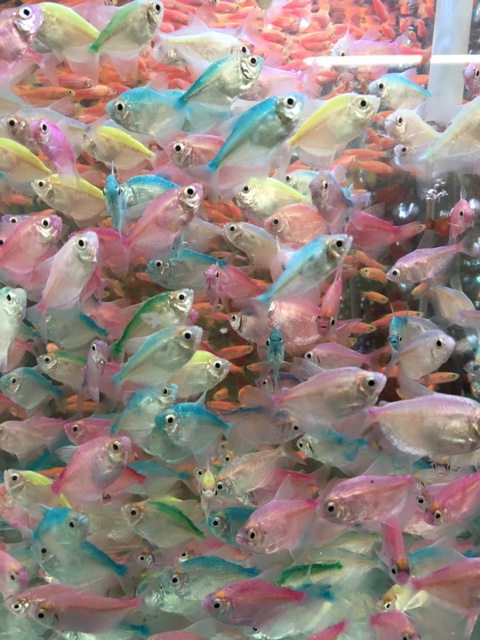
We walked in circles for a long time and then we asked Zhou Sir to pick us up again and coincidentally CJ had finished his exam. Then CJ asked Zhou Sir to take us to the Yu family ancestral hall. 余家风采唐…
Zhou Sir talked to the guardian at the door and he let us all in.
It was gorgeous.
CJ explained that this isn’t open for tourists or any random person because the architecture is not made for withstanding a lot of traffic. Plus, if anyone were to accidentally break any piece of the roof or anything, replacing anything would be the headache of a lifetime. It’s currently being used as a middle school. People have classes in the buildings next to it, as well as inside of the ancestral hall. CJ says that it’s mostly art and music classes in the ancestral hall.
There is a Chen Family Ancestral Hall (陈家祠) in Guangzhou. The day before, Jim had showed me a collection of books in the Tangkou hostel library on the carvings on the Chen Family Ancestral Hall. There are thousands of stone and wood carvings. The Chen family was huge and immensely wealthy. (Though we have the same last name, I’m pretty sure I have nothing to do with this family. My family is way too normal.)
CJ explained, “The Yu Family (余家) was competitive, but they knew that they could not compete with the Chen family in terms of size or wealth. They couldn’t make their ancestral hall bigger, nor could they make it more expensive. So the Yu Family tried to compete by building an ancestral hall with a superior design.”
I was in awe of how thoughtful and respectful it was. In a work of architecture, I feel as if trying to unite Chinese and western elements into one complete and successful work is a really tall order. And yet, there it seemed to stand before my eyes!
This is the diaolou. It had a really big effect on the Kaiping diaolou, especially the diaolou that right next to Liyuan and Cangdong Village. There is a diaolou there that evokes Islamic architecture, and CJ says that its minaret-looking towers were actually inspired by the diaolou of the Yu family.
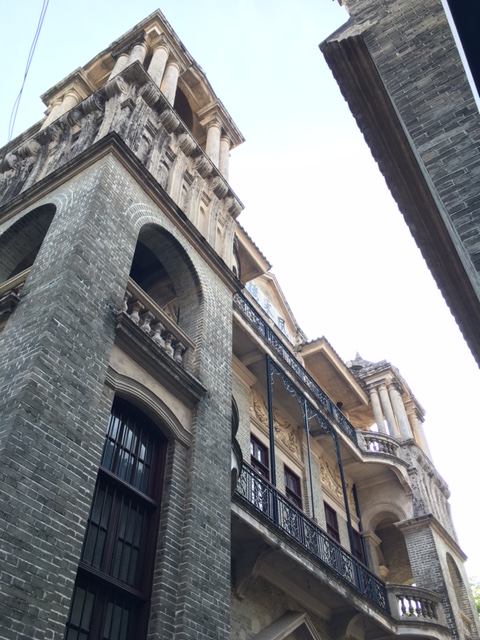
Be still, my beating heart.
I was so happy, so amazed. I thought about what Professor Johnson would think if he were to see this. What Professeur Gouvernnec would think! If they liked the diaolou, what would they think of the Fengcai Hall? What would they think of the Chen Family Ancestral Hall?
–
“You have to go to Guangzhou!” Jim had said a couple of days go. I really didn’t want to leave Kaiping even for a moment for my short fellowship. But now, I think he is right! Now, I really, really want to go to Guangzhou.
–
After visiting the Fengcai Temple, we picked up Zhou Sir’s daughter from school and then CJ took us to get snacks… really unhealthy but really tasty snacks. He had Shionyi take down the number of the uncle who owned the stand, saying, “Uncle, next time I buy from you, I will be buying by the pan.”
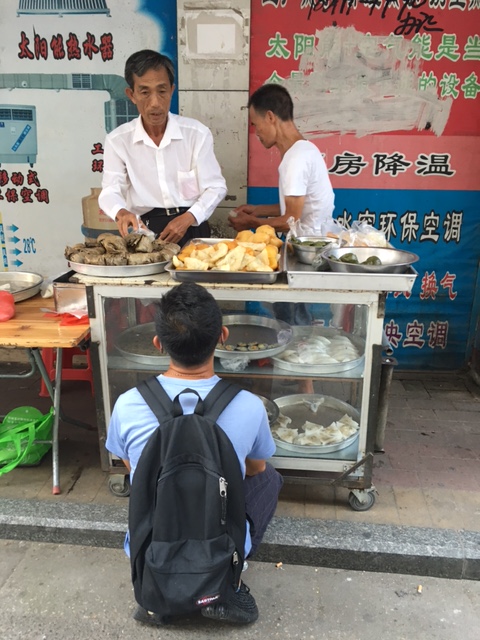
After we got the snacks, we had congee for dinner at a place recommended by Zhou Sir. Then, we drove by the hospital where I was born! I happened to catch sight of it from the van. CJ had Zhou Sir stop the van so that he could take a picture of me for my mom.
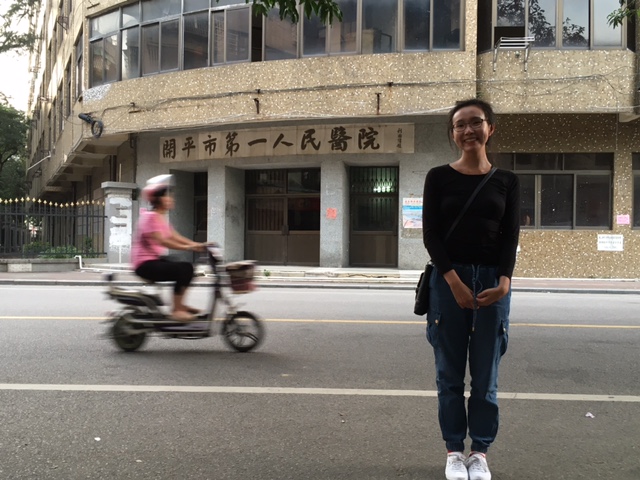
It’s no longer a hospital. Or at least, it’s no longer a western-styled hospital because there was an uncle inside and CJ asked him what they used the building for, and the uncle said that it’s being used for Traditional Chinese Medicine. Across the street, there is an orphanage.
“Wow, I feel really emotional for you all of a sudden! I kind of want to cry!” Shionyi said.
“What? Why are you emotional!” I laughed, “I’m not even emotional!”
“Hm, how should I say this, well, I’ve always known where I was born. I pass by the hospital all the time back in Xinhui. But I think about you, and how you don’t know where you were born, and then you come back now and you are seeing it for the very first time… ah, I just feel really emotional!”
Back in the van, Zhou Sir joked that I should ask my mom clearly where I was born. Maybe she picked me up from across the street. Except I’m pretty sure I was born in the old hospital, because my mom has a Caesarian scar that she used to bring up very often if I was being a difficult child. (“Oh! How much pain you put me through back then! How much pain you put me through now!”) She brings it up less nowadays.
–
After dinner, all of us were really, really full and needed help digesting. CJ dragged us all to this HUGE park in Kaiping called the Golden Mountain Park (金山公园). I think it was actually named after someone, though. CJ said that there used to be a famous Daoist who lived on the top of the mountain. It reminded me a little bit of Buttes Chaumont. But it is even more incredible, even bigger. Way bigger. Buttes Chaumont’s hills are man-made, but the ones at Golden Mountain Park are natural. I had to ask CJ to verify…
“Of course the mountain was always there! What? Did you think somebody put that mountain there to make a park?”
“Hey! I don’t know! People could! … They do it in France.”
“Even if they made an artificial mountain, they could not possibly make an artificial mountain so big! Are you kidding me?!”
I had no idea Kaiping was so full of beautiful things. When Shionyi and Tony and I were wandering around the malls earlier that afternoon, I was thinking, “There is nothing to see in Kaiping, no wonder so many people leave,” and in a couple of hours, CJ managed to completely, thoroughly demolish this thought.
There was so much to see in Kaiping. I want to take everyone to see it all.
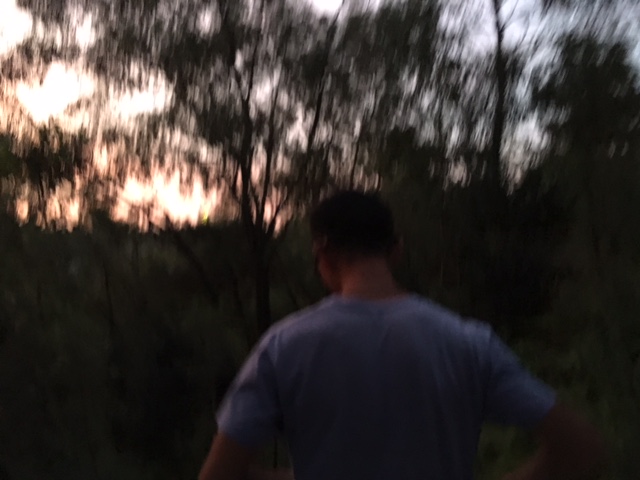
When night finally fell, Zhou Sir told us to meet him at the People’s Park because there was apparently a spectacle! There were performances and stuff. Not totally sure what was happening. But it was related to art and culture. I could recognise at least those couple of Chinese words.
CJ ran into Xie Shifu (谢师傅), a master guqin player. He explained he was there to receive an award. CJ also ran into a couple of other official-looking people, people he has to or had to deal with from working at Cangdong. The performances were few and far in between the official speeches that went on and on and on in Mandarin. We baked our buttocks on the hot stone amphitheater, and my mouth felt like cotton. Eventually, it became too late and we became too thirsty. We couldn’t wait for Xie Shifu to get his award, so we left to go home.
There was a short scene from a Cantonese opera. I didn’t recognise it, but I think the male character was named Yang. I’m not really into it, though my grandpa used to love watching tapes of the opera.
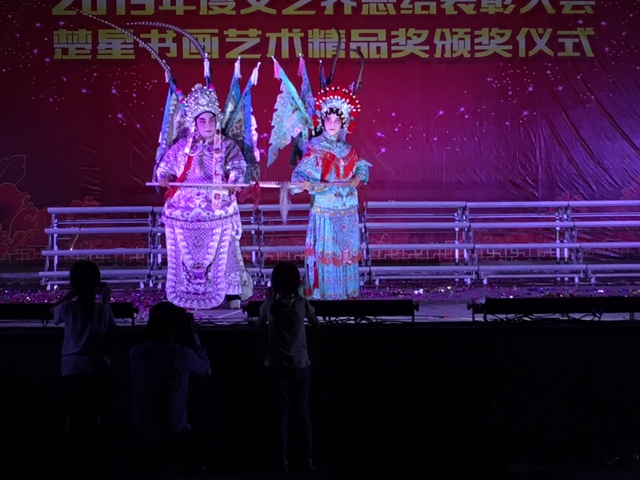
All in all, it was a really, really, really lovely and fulfilling day in the county where I was born.















